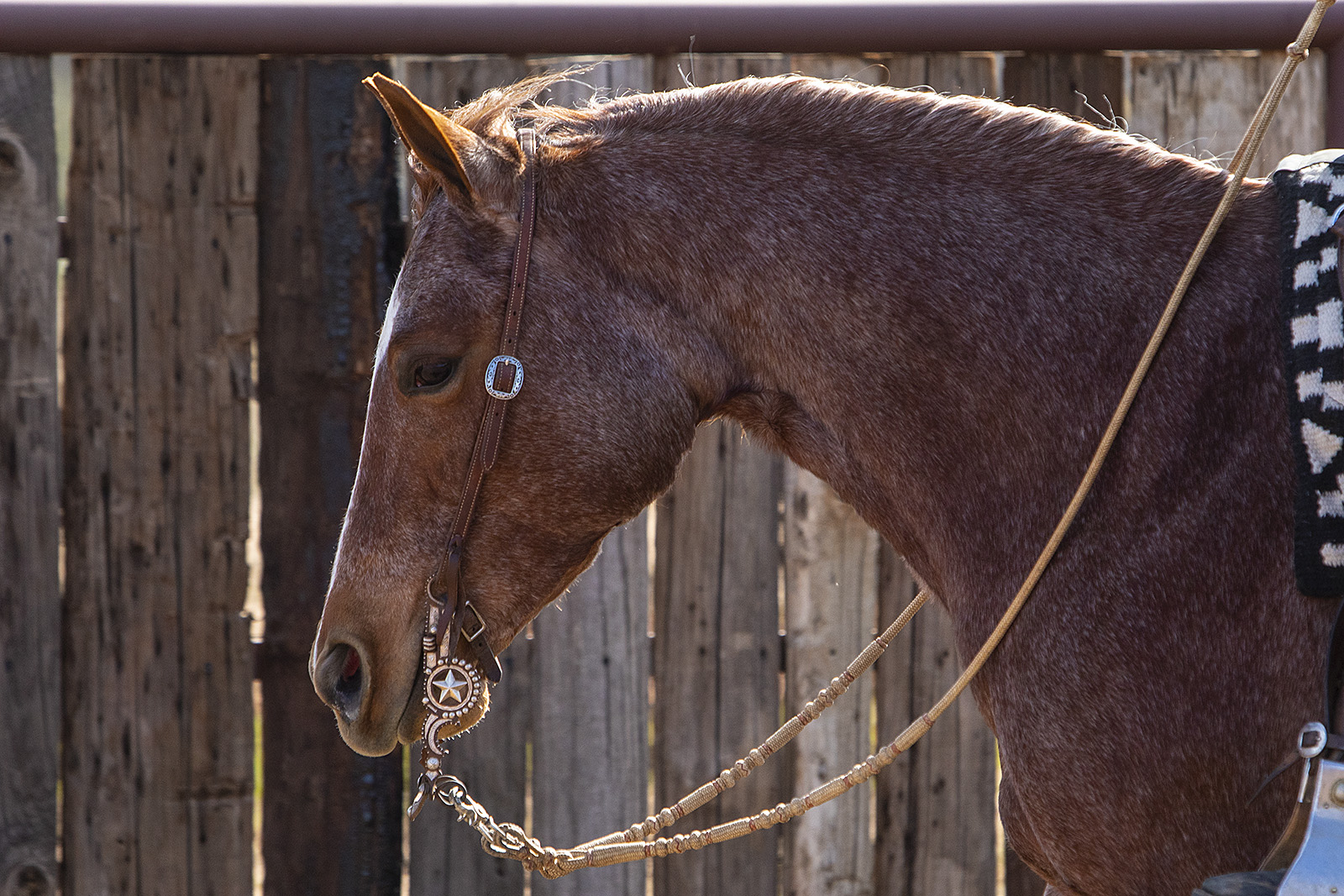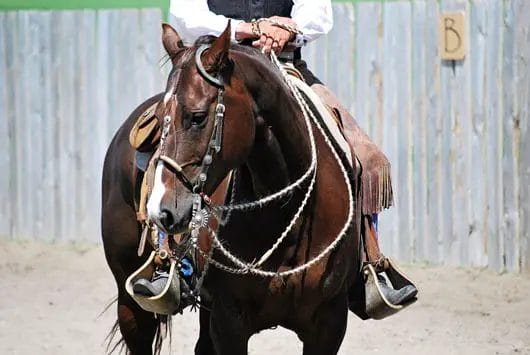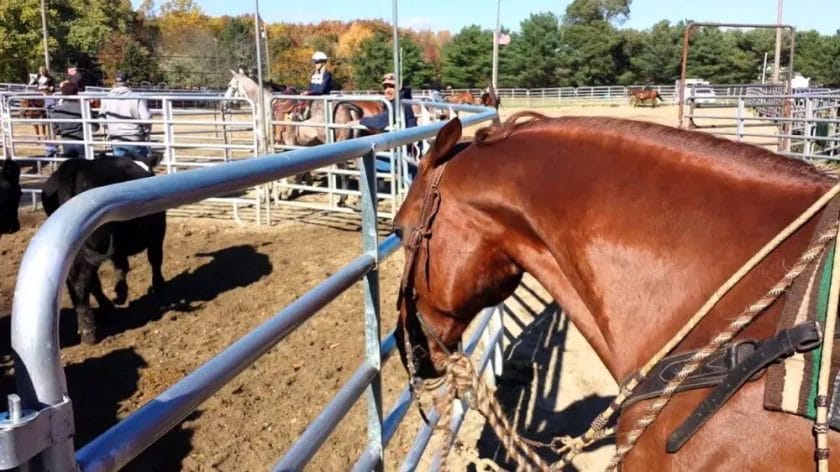A spade bit for horses is a specialized type of bit used in horse training and riding. It is designed with a unique spade-shaped mouthpiece that applies pressure on the horse’s tongue and palate. This type of bit is commonly used in certain Western riding disciplines, particularly in the vaquero or bridle horse tradition. The spade bit requires a high level of skill and finesse to use effectively, making it suitable for experienced riders.

Advantages of Using Spade Bits for Horses
Spade bits are a type of horse bit that offer several advantages when it comes to training and riding horses. These bits have a unique design that sets them apart from other types of bits, and their benefits make them a popular choice among equestrians. In this section, we will explore the advantages of using spade bits for horses.
1. Increased Control
One of the main advantages of using spade bits is the increased control they provide over the horse. The spade bit has a long, flat mouthpiece that rests on the horse’s tongue and applies pressure when cues are given. This design allows for more precise communication between the rider and the horse, giving the rider greater control over the horse’s movements.
2. Enhanced Stop and Turn Signals
Spade bits are known for their ability to improve stop and turn signals. The spade, which is the part of the bit that extends upwards from the mouthpiece, creates a gentle pressure on the roof of the horse’s mouth when cues are given. This pressure prompts the horse to respond to the signals more effectively, making it easier for the rider to execute maneuvers such as stops, turns, and changes in direction.
3. Subtle Communication
Another advantage of using spade bits is the ability to communicate with the horse in a subtle manner. The design of the spade bit allows for delicate cues to be transmitted to the horse without the need for heavy rein pressure. This subtlety is particularly useful in disciplines that require precise and nuanced movements, such as dressage or reining.
4. Encourages Vertical Flexion
Spade bits encourage the horse to maintain a proper vertical flexion, which is essential for balance and collection. The spade bit promotes a softening of the horse’s jaw and poll, encouraging the horse to carry itself in a rounder frame. This not only improves the horse’s overall movement and carriage but also helps to develop strength and suppleness in the horse’s musculature.
5. Traditional and Aesthetic Appeal
Spade bits have a long history and are deeply rooted in Western horsemanship traditions. Many riders appreciate the aesthetic appeal of using a traditional tack that aligns with the cultural heritage of horsemanship. Additionally, the use of spade bits in certain Western disciplines, such as vaquero or bridle horse training, is a testament to the horsemanship skills and communication between rider and horse.
In summary, spade bits offer several advantages when it comes to training and riding horses. They provide increased control, enhance stop and turn signals, allow for subtle communication, encourage vertical flexion, and have a traditional and aesthetic appeal. These benefits make spade bits a popular choice among equestrians who value effective and precise communication with their horses.

Choosing the Right Spade Bit for Your Horse
In this section, we will discuss the importance of choosing the right spade bit for your horse. A spade bit is a type of bit that is commonly used in horse riding to control the horse’s movements and communicate with them effectively. The spade bit consists of a mouthpiece, shanks, and a spade-shaped piece in the center.
When it comes to selecting the right spade bit for your horse, there are several factors to consider. Let’s explore these factors in detail:
1. Horse’s Experience Level
The experience level of your horse plays a significant role in determining the type of spade bit you should use. For a more experienced and well-trained horse, a spade bit with a higher port may be suitable. This type of bit requires a higher level of finesse and understanding from the horse, as it applies more pressure on the tongue and palate.
On the other hand, if you have a young or less experienced horse, it is recommended to start with a milder spade bit. Look for a bit with a lower port and shorter shanks, as it will provide more comfort and ease for your horse as they learn to respond to the bit’s cues.
2. Horse’s Conformation
The conformation of your horse’s mouth and head should also be taken into consideration when selecting a spade bit. Each horse’s mouth is unique, and it is essential to find a bit that fits comfortably and correctly.
If your horse has a low palate or a sensitive mouth, a spade bit with a higher port may cause discomfort or even pain. In such cases, opt for a bit with a lower port or consider using a different type of bit altogether, such as a snaffle bit.
3. Riding Discipline
The type of riding discipline you engage in will also influence your choice of a spade bit. Different riding disciplines have specific requirements and rules regarding bit usage.
For example, in the discipline of reining, where precision and finesse are paramount, a spade bit with a higher port and longer shanks may be preferred. On the other hand, in the discipline of dressage, which emphasizes lightness and harmony, a milder spade bit with a lower port may be more appropriate.
4. Bit Material and Quality
The material and quality of the spade bit are essential factors to consider for your horse’s comfort and overall riding experience. Spade bits are typically made from stainless steel, sweet iron, or copper.
Stainless steel bits are durable, easy to clean, and have a neutral taste. Sweet iron bits have a pleasant taste that encourages salivation and acceptance of the bit. Copper bits have a similar effect, as they also promote salivation and softening of the horse’s mouth.
Additionally, ensure that the spade bit is well-made and properly balanced. Inspect the bit for any sharp edges or rough surfaces that may cause discomfort or injury to your horse.
5. Professional Guidance
Lastly, if you are unsure about selecting the right spade bit for your horse, it is always wise to seek professional guidance. A knowledgeable trainer or equine specialist can assess your horse’s needs and provide expert advice on the most suitable spade bit for your specific situation.
In summary, choosing the right spade bit for your horse is essential for effective communication and a comfortable riding experience. Consider your horse’s experience level, conformation, riding discipline, bit material, and seek professional guidance if needed. By taking these factors into account, you can ensure that you select a spade bit that suits your horse’s needs and enhances your overall riding experience.

How to Properly Use a Spade Bit on a Horse
Using a spade bit on a horse requires knowledge, skill, and proper technique. The spade bit is a specialized tool that is used in certain equestrian disciplines for advanced riders. In this section, we will discuss the steps to properly use a spade bit on a horse.
1. Choose the Right Spade Bit
Before using a spade bit on your horse, it is crucial to select the right bit that suits your horse’s needs and your riding style. There are various styles and sizes of spade bits available, so it is essential to consult with a professional trainer or experienced equestrian to determine the most suitable option for your horse.
2. Prepare Your Horse
Properly preparing your horse before using a spade bit is essential for a successful and comfortable experience. Begin by ensuring that your horse is well-trained and responsive to basic cues. It is important to establish trust and respect with your horse before introducing a spade bit.
Additionally, make sure your horse’s mouth is healthy and free from any dental issues or discomfort. Regular dental check-ups are crucial to maintaining your horse’s oral health and ensuring the bit fits properly.
3. Introduce the Spade Bit
When introducing a spade bit to your horse, start with a gentle approach. Begin by allowing your horse to smell and feel the bit, ensuring they are comfortable with its presence. Gradually introduce the bit into your horse’s mouth and give them time to become accustomed to the sensation.
Remember to always use gentle, steady pressure when applying the bit. Avoid jerking or pulling on the reins, as this can cause discomfort and confusion for your horse.
4. Establish Communication
Using a spade bit requires clear communication between you and your horse. Start with basic commands and cues, such as turning and stopping, to establish a connection and understanding with your horse. Use light pressure on the reins to guide your horse’s movements, allowing them to respond and adjust accordingly.
5. Practice and Refine
Like any equestrian skill, using a spade bit effectively takes practice and refinement. Take the time to consistently work with your horse and refine your technique. Seek guidance from a knowledgeable trainer or instructor to ensure you are using the spade bit correctly and not inadvertently causing discomfort or harm to your horse.
6. Regular Check-ups
Regular check-ups with a professional equestrian or trainer are essential to ensure you are using the spade bit correctly and to address any potential issues that may arise. They can provide guidance, assess your technique, and make any necessary adjustments to ensure the well-being and comfort of your horse.
In summary, using a spade bit on a horse requires careful consideration, proper preparation, and ongoing practice. Selecting the right bit, introducing it gradually, establishing clear communication, and seeking guidance from professionals are key steps to ensure a successful and humane experience for both you and your horse.
Common Misconceptions about Spade Bits for Horses
Horse riding enthusiasts often come across various types of bits while exploring the world of equestrian equipment. One such bit that has gained both popularity and controversy is the spade bit. However, there are several common misconceptions surrounding spade bits for horses that need to be addressed and clarified. In this section, we will debunk these misconceptions and provide a comprehensive understanding of spade bits.
1. Spade bits are cruel and inflict pain on horses
One of the most prevailing misconceptions about spade bits is that they are cruel and cause unnecessary pain to horses. This misconception arises from a lack of understanding of how spade bits work. Contrary to popular belief, a well-designed and properly fitted spade bit does not cause pain when used correctly by an experienced rider.
A spade bit is designed with a high port, resembling a “spade” shape, which rests on the roof of the horse’s mouth. When tension is applied to the reins, the spade bit puts pressure on the palate, creating a cue for the horse to respond to the rider’s commands. The pressure is not meant to cause pain, but rather to provide clear communication between horse and rider.
2. Spade bits are only for advanced riders
Another misconception is that spade bits are exclusively for advanced riders who possess exceptional skill and finesse. While it is true that spade bits require a certain level of expertise to be used effectively, they are not limited to advanced riders only.
Like any other piece of equestrian equipment, the suitability of a spade bit depends on the rider’s competence and the horse’s training. Novice riders can also learn to use spade bits correctly and safely under the guidance of a knowledgeable instructor.
3. Spade bits are inherently harsher than other types of bits
It is often assumed that spade bits are inherently harsher than other types of bits, such as snaffles or curbs. However, the severity of a bit primarily depends on the rider’s hands and the level of pressure applied, rather than the type of bit itself.
A properly fitted and used spade bit can be just as gentle as any other bit. It is essential to remember that the key to using any bit effectively lies in the rider’s ability to maintain light and consistent contact with the horse’s mouth.
4. Spade bits can fix behavioral issues in horses instantly
Some horse owners mistakenly believe that using a spade bit can instantly fix behavioral issues in horses. While a well-trained horse may respond positively to a spade bit, it is not a magical solution for behavioral problems.
Behavioral issues in horses are multifaceted and require a comprehensive approach that encompasses proper training, consistent handling, and a deep understanding of the horse’s individual needs. Using a spade bit without addressing underlying issues is unlikely to yield the desired results and may even exacerbate the problem.
5. All spade bits are the same
Lastly, there is a misconception that all spade bits are the same. However, this is far from the truth. Spade bits come in various designs and mouthpiece configurations, each catering to different horse breeds, disciplines, and rider preferences.
It is crucial to choose a spade bit that is appropriate for your horse’s mouth conformation and level of training. Consulting with a knowledgeable trainer or bit expert can help you select the right spade bit for your specific needs.
Summary
Spade bits for horses are often subject to misconceptions that label them as cruel, suitable only for advanced riders, inherently harsh, instant behavioral fixers, or all the same. However, these misconceptions can be debunked by understanding the proper use and design of spade bits. When used correctly, spade bits can provide effective communication between horse and rider without causing unnecessary pain. They are suitable for riders of different skill levels and can be as gentle as any other bit when used with light and consistent contact. It is important to address behavioral issues in horses holistically and choose a spade bit that suits the individual horse’s needs. By dispelling these common misconceptions, riders can make informed decisions about whether spade bits are suitable for their horses.
FAQs
What is a spade bit for horses?
A spade bit is a type of bit used in horse riding that consists of a long, straight mouthpiece in the shape of a spade. It is a more severe bit and requires an experienced rider’s skill to be used properly. Spade bits are typically used in certain western disciplines, such as traditional vaquero horsemanship.
Conclusion
In conclusion, the spade bit for horses is a versatile tool that can greatly aid in training and communication with these magnificent creatures. Its unique design and functionality provide riders with enhanced control and precision, allowing for smoother movements and smoother transitions between gaits. Whether used in Western disciplines or for general horsemanship, the spade bit offers an effective and efficient means of guiding and shaping a horse’s movements. By ensuring proper usage and understanding the horse’s individual needs, the spade bit can be a valuable addition to any equestrian’s toolkit.
In summary, the spade bit is not only a practical tool but also an opportunity for riders to deepen their connection and understanding of their horses. Its presence in the equestrian world demonstrates the ongoing evolution and innovation within horsemanship practices. As with any piece of equipment, it is crucial to prioritize the horse’s well-being and comfort when using a spade bit, ensuring that it is fitted correctly and used with skilled hands. By incorporating this tool responsibly, riders can unlock new levels of communication and partnership with their equine companions.
